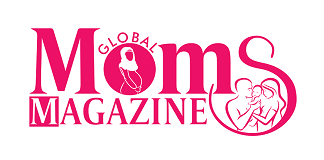Far from being innocuous, or as delicate as the pink ribbons that represent it may imply, breast cancer is actually the third leading cause of death among women, trailing behind only heart disease and lung cancer as the cause of female mortality.
Men can also be afflicted by breast cancer, though it is much less commonly seen in men than in women.

What is breast cancer?
Also known as malignant neoplasm of breast, breast cancer is characterized by an uncontrolled division of cells, a feature that is characteristic of all cancers. For breast cancer, this cell growth typically originates in the ducts and lobules of the breast. What can make breast cancer so deadly is when these uncontrolled cells metastasize, or spread, to other parts of the body; most commonly to the bones, brain, liver, and lungs.
There are certain risk factors for developing breast cancer, including being a woman of advanced age, obesity, having dense breast tissue, radiation exposure, reproductive history (ie never having been pregnant, or becoming pregnant after age 35), and a family history of breast cancer, among others.
Family history of breast cancer icd 10: What is the ICD-10 code for family history of breast cancer?
A family history of breast cancer, technically classified as ‘malignant neoplasm of breast Z80.3’ for ICD-10, is extremely important to know about when determining your risk for breast cancer.
The fact is, if you have a family member with breast or ovarian cancer, the greater your risk becomes for developing breast or ovarian cancer yourself. This is particularly true if the afflicted family member(s) is a parent, a sibling, or a child; or, in other words, a first-degree relative. However, the appearance of breast cancer in a grandparent, aunt, uncle, niece, nephew, or grandchild- also known as secondary relatives- is also considered to be a red flag, especially if multiple family members have been diagnosed with it, regardless of primary or secondary relative status.
Only 5-10% of breast cancer patients claim to have a family history of breast cancer, but knowledge of a predisposition to the disease can affect the course of action taken for treatment.
If an individual is found to have a family history of breast cancer, their doctor may determine that an early mammogram and/or a meeting with a genetic counselor should be the next steps.
BRCA1 and BRCA2
A genetic test for breast cancer primarily looks for mutations in the BRCA1 and BRCA2 genes. ‘BRCA’ stands for “breast cancer”. Everybody has BRCA1 and 2 genes; it’s when there is a mutation in one or both of these genes that we see an exponential rise in the risk of breast, ovarian, and prostate cancers.
Someone who does not test positive for a mutated BRCA gene (ie most of the population) will see a 13% risk for breast cancer by age 70-80, whereas the number rises to 55-72% for those who test positive for BRCA1, and 45-69% for a positive BRCA2 result.
It must be said, however, that a genetic predisposition does not guarantee a breast cancer diagnosis.
I have BRCA1/BRCA2 and a family history of breast cancer; what are my options?
For those women and men who test positive for BRCA1 or 2 mutations, there are options to reduce their cancer risk.
First, enhanced screening is recommended. According to the American Cancer Society, women considered to be at an average risk for breast cancer can choose to start annual mammogram screenings between the ages of 40-44. For women at high risk, the ACS recommends an annual mammogram and MRI breast screening starting at age 30, or whenever is deemed best according to their healthcare provider.
Another preventative option is to undergo a risk-reducing surgery, also known as “prophylactic surgery”. This surgery involves removing tissue that is at a high risk for becoming cancerous, be it breast tissue, and/or ovarian and fallopian tissue for women. A bilateral prophylactic mastectomy, which involves removing both breasts and the surrounding tissue, is an example of this. One must keep in mind that risk-reducing surgery doesn’t eliminate all chances for developing breast cancer, but it can reduce the risk of it developing by up to 95% depending on the type of surgery involved.
For carriers of either the BRCA1 or BRCA2 mutation that can’t or won’t opt for risk-reducing surgery, the use of chemoprevention is also an option. This involves taking drugs, such as tamoxifen and raloxifene, that can reduce the risk of breast cancer by blocking the estrogen that increases the growth of cancer cells. Unfortunately, these drugs can come with their own side effects, such as an increased risk of blood clots.
Take action.
While none of us can accurately predict the future 100%, what we do know is that knowledge is power. Finding out our family’s history of breast cancer is a first step that we all can and should take to prevent succumbing to this devastating disease. “High-risk” is not an automatic death sentence. There are options.
Frequently Asked Questions
1. What is the ICD-10 code for family history of cancer?
Anwer: Z80.3
2. What is the ICD-10 for breast cancer?
Answer: C50 Malignant neoplasm of breast.
Authored by F k_blackwell5
